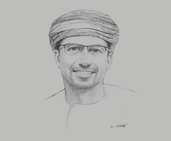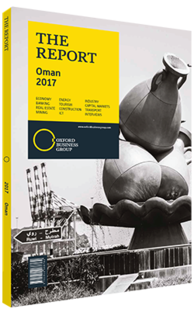Abdulaziz Mohammed Al Balushi, Group CEO, OMINVEST, on interest rates and investment: Interview

Interview: Abdulaziz Mohammed Al Balushi
What impact did the US Federal Reserve’s interest rate hike have in Oman, and how has the dollar peg played into the situation?
ABDULAZIZ MOHAMMED AL BALUSHI: The US election victory of Donald Trump in November 2016 has led to a major and surprising sell-off in global bond markets and drove US interest rates to the highest levels in a year. As a result of rising US bond yields, the dollar has appreciated significantly. Since most GCC currencies are pegged to the dollar rate, GCC monetary policy is inevitably tied to the US Federal Reserve’s decisions.
Since December 2015, the Fed has been on a slow course of raising interest rates. While GCC countries are already under pressure due to fiscal imbalances amid low oil prices and tight liquidity conditions, the Fed’s rate hikes pose an added challenge.
For instance, the GCC benchmark three-month Saudi Interbank Offered Rate (SIBOR) rose sharply from 1.6% at the start of 2016 to 2.4% in October 2016. However, following the successful record bond issuance by Saudi Arabia in October, the SIBOR has dropped to 2.1%. Oman has also successfully tapped into the international bond market by issuing $4.5bn in international bonds and sukuk (Islamic bonds) in 2016.
The success of international bond issuances in the GCC can be attributed to low levels of government debt and high fiscal reserves. Oman’s budget deficit reached $11.4bn in the first eight months of 2016 and the government plans to fund a significant portion of expected deficits through external borrowing. In 2017 the Omani government plans to sell between $1.5bn and $2bn worth of international bonds.
Despite fiscal imbalances, Oman’s central bank has upheld the dollar peg, as the currency continues to serve as an anchor for monetary policy stability and perpetuates confidence among foreign investors. With a plan for increased international borrowing and improvement in fiscal balances, I don’t foresee any risks of currency devaluation in Oman or the rest of the GCC.
How has increased interest in sukuk affected the sultanate’s capital market?
AL BALUSHI: Recently, MB Holding’s $150m sukuk issuance was approved by the Capital Market Authority (CMA), making it the second corporate sukuk in Oman at a fixed yield of 8.5%. It was followed by the OR50m ($129.9m) issue from Tilal Development Company at a fixed rate of 5%. The Omani government issued OR250m ($649.3m) in local sukuk in October 2015 at a rate of 3.5% and $500m in international sukuk in June 2016 at a rate of 3.5%. The recent trend suggests that sukuk will play an important role in Oman’s capital markets and offer an alternate source of funding for local companies. Growth in total sukuk issuance will largely be driven by the need to bridge fiscal deficits, by corporations seeking alternative funding sources and by the capital requirements of Islamic financial institutions. Global sukuk issuance reached $63bn in 2015, with the GCC’s share increasing from 23% in 2014 to 29% in 2015. New regulations issued by the CMA on sukuk are expected to offer greater flexibility for their issuance. For example, the CMA has waived restrictions on the amount to be raised based on a company’s capital, and has introduced trust structures to allow the incorporation of special-purpose vehicles.
What is being done to attract more retail investors to the market in Oman?
AL BALUSHI: The CMA has been taking steps to list more companies and increase investor participation. Such moves include the compulsory listing of insurance companies and concessions for family-run businesses to encourage listing. There are now a total of seven insurance companies expected to file for initial public offerings (IPOs) by August 2017. The CMA generally reserves 60% of an IPO for retail investors, ensuring a fair allotment to the segment. As the Omani economy diversifies and grows, and more companies list, we can expect greater participation from the retail segment.
You have reached the limit of premium articles you can view for free.
Choose from the options below to purchase print or digital editions of our Reports. You can also purchase a website subscription giving you unlimited access to all of our Reports online for 12 months.
If you have already purchased this Report or have a website subscription, please login to continue.

